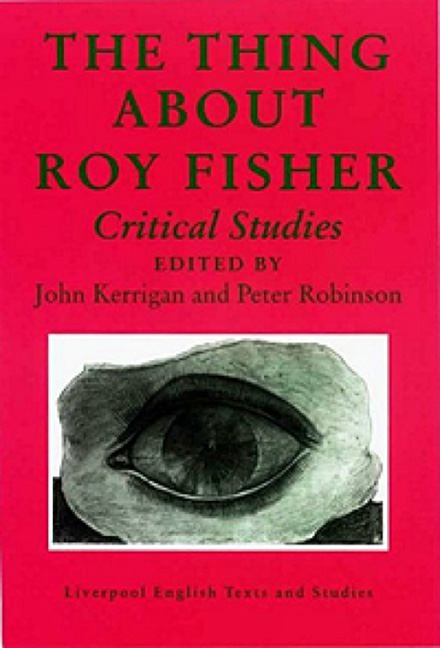Book contents
- Frontmatter
- Contents
- Notes on Contributors
- Acknowledgements
- Abbreviations
- Introduction
- 1 Roy Fisher on Location
- 2 ‘Menacing Works in my Isolation’: Early Pieces
- 3 TheWork of a Left-Handed Man
- 4 Osmotic Investigations and Mutant Poems: An Americanist Poetic
- 5 ‘Making Forms with Remarks’: The Prose
- 6 Cutting-Edge Poetics: Roy Fisher's ‘Language Book’
- 7 A Burning Monochrome: Fisher's Block
- 8 ‘The Secret Laugh of the World’
- 9 ‘Exhibiting Unpreparedness’: Self, World, and Poetry
- 10 ‘Coming into their Own’: Roy Fisher and John Cowper Powys
- 11 A Furnace and the Life of the Dead
- 12 Last Things
- Roy Fisher: A Bibliography
- Indexes
7 - A Burning Monochrome: Fisher's Block
- Frontmatter
- Contents
- Notes on Contributors
- Acknowledgements
- Abbreviations
- Introduction
- 1 Roy Fisher on Location
- 2 ‘Menacing Works in my Isolation’: Early Pieces
- 3 TheWork of a Left-Handed Man
- 4 Osmotic Investigations and Mutant Poems: An Americanist Poetic
- 5 ‘Making Forms with Remarks’: The Prose
- 6 Cutting-Edge Poetics: Roy Fisher's ‘Language Book’
- 7 A Burning Monochrome: Fisher's Block
- 8 ‘The Secret Laugh of the World’
- 9 ‘Exhibiting Unpreparedness’: Self, World, and Poetry
- 10 ‘Coming into their Own’: Roy Fisher and John Cowper Powys
- 11 A Furnace and the Life of the Dead
- 12 Last Things
- Roy Fisher: A Bibliography
- Indexes
Summary
In an interview given in 1975 Roy Fisher described his relief at finding, in a memorial fountain, ‘a landscape which didn't need to be rendered fictive since it was so’. This was a relief for the reason that, he reported, ‘I find it a bit of an irritation to have to make fictive things which look fictive in order to show that I am not a brute documentary writer who's only talking about a very simplistic level of immediate circumstances or issues or whatever.’ Remarks like these initially appear to blurt out an unwelcome truth: as though artifice, or the fictive, were an extra component added on by the poet so as to persuade readers of the more than documentary character of his work. ‘The fictive’ runs the risk of turning into mere topping, no less inert than the data-set which it is supposedly to elevate into art. Without this fictive supplement, the remarks seem to say, the poet might as well be showing readers his snaps. Enthusiasts for Fisher's work sometimes appear to confirm such an impression. ‘The ludic dimension of his (and all modernists’) work is of little interest unless it is in constant tension with the realist impulse (as in Joyce's Ulysses), for the subversive text which undercuts and questions realism must also provide us with the material on which these subversive processes must operate.’ What are presented here as the preconditions for successful disturbance rather resemble those for the production of a commodity: the raw material of realism is worked over until it produces an object with value. Certainly, ‘[t]he tension between the fictive and the real is paralleled by the tension between his “hidebound” provincialism and his internationalism, between the traditions of English empiricism on the one hand and the perceptual experimentation and formalist artifice of European modernism.’ But whether this tension is not a nervous compromise, rather than an admirable collision, remains to be determined.
This essay explores the nature and consequences of blockage in Fisher's work. It concentrates upon the period immediately before and after the writer's blockwhich Fisher experienced in the late 1960s.
- Type
- Chapter
- Information
- The Thing About Roy FisherCritical Studies, pp. 173 - 192Publisher: Liverpool University PressPrint publication year: 2000



